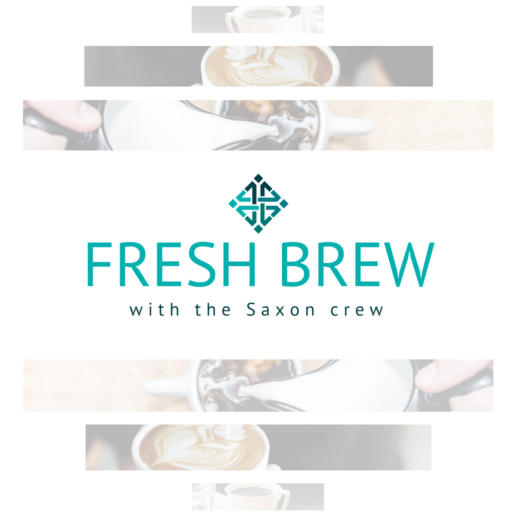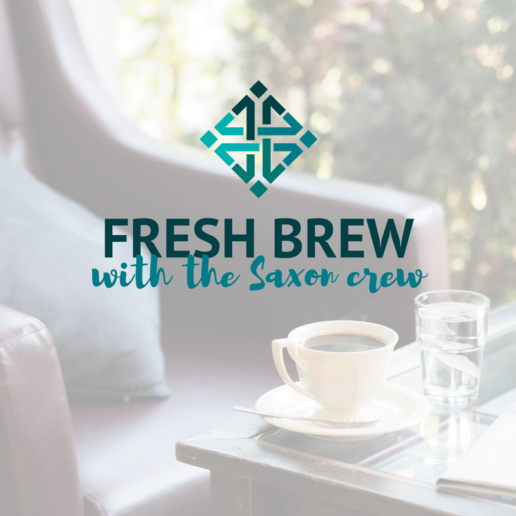School and office closures are a logistical nightmare for working parents
While COVID-19 is affecting travel plans and workplaces, it's beginning to have school districts close down to reduce the spread of any germs to children. Although keeping the safety of children a priority, working parents are being faced with challenging situations regarding the care of their children while they are at work. Read this blog post to learn more.
Last weekend, Jannell Nolan woke up to dozens of texts: Elk Grove Unified School District had announced its decision to close all of its 67 Sacramento County schools in California for the next week after a student tested positive for coronavirus.
That sent all four of her kids — two elementary schoolers, a middle schooler and a high schooler — home for the foreseeable future and left her doing full-time childcare. Nolan works for the district, so she's staying home while her husband is working at a nearby Costco Wholesale.
“My kids have playdates planned for the rest of the week,” she said. “I’m not going to keep them locked up all week, I’ll lose my mind.”
It's not ideal, but at least the family has one parent who won’t have to negotiate work and childcare schedules.
In the U.S., having a stay-at-home parent is a luxury that’s proving even more beneficial as schools shutdown and offices send employees home. A majority of American mothers with children younger than 18 are employed and in more than 60% of married couples, both parents work, according to data from the U.S. Bureau of Labor Statistics. With relatively little parental leave, fewer sick days and rigid schedules, working parents in the U.S. have a lot to juggle even when school is in session and everyone is healthy.
Coronavirus is adding new complications for that already stretched-thin demographic. Parents are scrambling to find childcare or figuring out how to be productive at home with kids around. Others are making tough choices between a paycheck and their families’ needs. Anxieties are even creeping up in places where the virus has not yet disrupted daily life.
“People are more stressed around the logistics than the actual disease,” said Elizabeth Gulliver, a mother of one and co-founder of Kunik, a membership-based community for working parents.
Alexa Mareschal, a Salt Lake City-based attorney, said she has “no idea” what she and her husband, who also has a full time job renovating homes, would do if her kids’ daycare is closed because of the virus. She finds it nearly impossible to be productive when working at home with her toddlers. “It’s kind of like trying to wrangle cats,” she said.
If widespread childcare and school closures come to Utah, Mareschal said she and her colleagues have discussed setting up a makeshift daycare for everyone’s kids, where the oldest ones would watch the younger ones. Other than that, she has no plan. “I’ll fly in my mom, I guess?” she said.
Like Mareschal, many working parents not yet affected by school or office closures are worrying about the feasibility of family quarantines. “The idea of being cooped up in my house trying to work with my kids running around for two weeks is not making me happy,” said Rachel Cherkis, a marketing manager for EY and mother of two, who already works remotely in the Miami area full-time. “There’s definitely not enough sound-proofing in my house.”
Brooklyn-based lawyer Colleen Carey Gulliver and her banker husband have started having conversations about what they’ll do if their three-year-old’s school closes. They may have to alternate days off work to watch their toddler. In the case that they both end up quarantined at home, she “might have to rely on TV more than you would like to get some actual time alone.”
In a way, these anxieties are for the privileged: Only 29% of the American workforce can do their jobs from home. To quarantine, most workers would have to take time off and many would forgo pay. Mendy Hughes, a single mother of four, has been working at a Walmart in Malvern, Arkansas, for the past decade and now makes a little more than $11 an hour. Not only is the 45-year-old cashier concerned about getting sick with the virus herself, she’s worried about what she’ll have to do if her kids, the youngest of whom is 10, had to stay home from school.
“I don’t know what I would do if they had to be on extended leave,” said Hughes, who is also a member of the Walmart watchdog organization United for Respect. “I’m a single parent so I really can’t afford to miss work.”
The U.S. is one of the only industrialized countries without federal paid sick leave. In light of the pandemic, President Donald Trump is expected to sign an order that would give some to hourly workers. Walmart this week also tweaked its own policy and now offers up to two weeks pay to employees who contract the virus or those who have to quarantine. These programs don’t necessarily cover the illness of a child or school closures.
No matter the situation, much of the care-taking and household burdens would likely fall to women, further exacerbating gender inequality. A 2017 survey by the Kaiser Family Foundation found that working mothers are more likely to take care of sick kids than working fathers. Among mothers surveyed, about 40% said they’re the ones who take care of a sick child, compared to 10% of fathers surveyed. Women with young children also do twice as much childcare as men, according to the U.S. Bureau of Labor Statistics. They also do more cooking, cleaning, and laundry. This all contributes to the so-called “motherhood penalty,” which accounts for the bulk of the gender pay gap.
There may, however, be long-term benefits to this experiment, Gulliver, the Kunik co-founder said. She’s hopeful that this experience will change some of the harmful stereotypes around working parents that tend to hurt women.
“If you were not visibly pregnant at the office for all nine months of your pregnancy, a lot of people don’t even know that you’re a parent,” Gulliver said, explaining that’s the case for fathers, adoptive parents and step parents, among others. “Being forced to work from home and having kids pop up in the back of screens is going to show that you don’t necessarily need to hide that you have a kid.” This visibility could push employers to support the needs of employees with children.
Still employers can’t fix everything. Marketing manager Cherkis, who already telecommutes full time, said that despite the fact that her husband is the stay-at-home parent to their two kids, some things still fall to her.
“At the end of the day I’m mom, and sick kids want to be with mom,” Cherkis said. “That’s the truth of it."
SOURCE: Bloomberg News. (13 March 2020) "School and office closures are a logistical nightmare for working parents" (Web Blog Post). Retrieved from https://www.benefitnews.com/articles/school-and-office-closures-are-a-logistical-nightmare-for-working-parents
Company Gifts That Workers Hate
Although giving a gift to compensate for a job well done can often lead to employees feeling unappreciated and may cause them to think the gift and feeling behind it is superficial. Read this blog post to learn more about gift-giving in the workplace.
Coffee mugs and water bottles emblazoned with the company's logo. Gift cards to stores that employees rarely visit.
These are among the gifts that managers give to workers—and that workers hate, that make them feel unappreciated, and that leave the impression that their employers are thoughtless.
So says a survey by Snappy, the New York City-based employee engagement company, which found that more than 8 in 10 U.S. employees have received a workplace gift—mostly from managers—that they didn't want.
Whether it's for an employee's birthday, for a work anniversary, or to celebrate the holidays, the survey of more than 1,000 U.S. workers demonstrates that managers may want to give more thought to workplace gift-giving.
No Logos, Please
Almost 3 in 4 workers would prefer to get a gift without their company logo on it, according to the survey, which Snappy conducted in September.
"Some employees have reported to me that they don't mind some gifts with logos, but they resent feeling like a 'walking billboard' for the company," said Paul White, who has a Ph.D. in psychology, is president of Appreciation at Work, and is co-author of The 5 Languages of Appreciation in the Workplace (Northfield Publishing, 2019). "Others state that when they are given gifts that have the company's logo, the item immediately is disqualified as a gift—because the focus of the item is the company, not the recipient."
White's research into how more than 100,000 employees feel about the workplace found that only 6 percent identified gifts as the primary way they want a company to show appreciation—far below getting words of affirmation (46 percent), quality time with a supervisor or co-workers (26 percent) and getting help from supervisors or colleagues on a project (22 percent).
"Employees are not saying they do not want tangible rewards … for doing good work," White wrote. "But what the data show is that when choosing comparatively between words of affirmation, quality time or an act of service—receiving a gift is far less meaningful than appreciation communicated through these actions. For example, employees often comment, 'If I receive some gift but I never hear any praise, no one stops to see how I'm doing, or I never get any help—the gift feels superficial.' "
Are Companies Catching On?
One would think, given research and books like White's that demonstrate how people feel about workplace gifts, that managers would adjust their gift-giving practices. Often, they don't because no one asks employees what they thought about the present. Workers are in a tight spot: If they complain or don't seem enthused, they may be seen as ungrateful or demanding, White said.
In fact, the Snappy survey found that of those workers who got a gift they didn't like, 9 in 10 pretended they liked the gift anyway.
"The leader needs to be interested in what the meaning or message of the gift is, [but] most often, it is a rather thoughtless process," White said. "In work relationships, it is the thought that counts. For employees who value gifts, either giving everyone the same item or giving them a generic gift with no thought or personal meaning is actually offensive."
Cord Himelstein is vice president of marketing and communications for HALO Recognition, an employee rewards and incentives company based in Long Island City, N.Y. He said he thinks companies are paying attention to their gift-giving practices. He noted recent data from WorldatWork showed that about 44 percent of recognition programs get updated or changed every year.
"If management isn't actively listening and applying feedback in a systematic way, then there's no point in offering gifts at all," he said. "Nailing down the right balance of rewards that employees really love takes time and effort."
Best and Worst Gifts
Respondents said that some of the "worst" gifts employers ever gave them included a pin, a plaque, and a gift card to a store they'd never visited.
In fact, more than 3 in 4 said a gift card is less meaningful than an actual gift, and almost 9 in 10 admitted that they'd lost the gift card or forgotten that it had a balance on it.
"Gift cards feel transactional and impersonal," said Hani Goldstein, co-founder and CEO of Snappy. "Employers fail to realize that gift cards put a price tag on the recipient's value and make them feel like they're worth $25. Our research points to one key insight: The most appreciated gifts aren't impactful because of their actual monetary value. What matters most is what the gifts are and how they are given."
Employers should remember that things like pins and plaques, Himelstein said, "are commemorative add-ons, not whole gifts, and should always be supplemented with more substantial and appropriate rewards."
Employees also described some of the "best" gifts employers gave them, which included an espresso machine, a trip to Paris, an iPad and a television.
White noted that such expensive gifts can be impractical for a company. They may be appropriate in rare situations, White said, such as rewarding a worker who reached an exceptional goal or recognizing someone who's served long and well.
"Generally, meaningful gifts between employees and supervisors are more impactful when they are personal and thoughtful rather than pricey," he said.
Himelstein said more expensive gifts—at least those more expensive than mugs or pins—"aren't only practical, it's a best practice."
"Nobody wants a cheap gift for their hard work, and employees can always tell when the company isn't trying," he said. "Also, don't lose sight of the fact that you don't need to constantly shower employees with expensive gifts to make them feel appreciated."
SOURCE: Wilkie, D. (03 March 2020) "Company Gifts That Workers Hate" (Web Blog Post). Retrieved from https://www.shrm.org/resourcesandtools/hr-topics/employee-relations/pages/gifts-workers-hate-.aspx
As Coronavirus Spreads, Managers Ask How to Handle Telecommuting
With the Coronavirus spreading throughout larger cities in the United States, employers are looking at various ways to keep the workplace and employees safe and healthy. Many employers are turning to remote work to support these efforts. Read this blog post from SHRM to learn more about supporting remote work.
As the coronavirus continues to spread through the U.S.—so far infecting at least 162 people and causing 11 deaths—many employers are considering telling or have already told their employees to work from home. In China, where the virus was first identified, millions of people are working remotely.
But there are technological, process, security, workers' compensation and even tax considerations employers must keep in mind to support remote work.
How to Create an Effective Teleworking Program
One of the first tasks for those who plan to manage teleworkers is deciding who on staff may be eligible for telework. Once that's decided, managers should keep in mind the following best practices.
SHRM's Remote Work Resource Center
These resources can help employers set up flexible work arrangements. They include a sample telecommuting application form and telecommuting policy and information about whether telecommuters are covered under workers' compensation.
Considering a Remote Work Policy? Consider This
Have you checked whether your workers' compensation policy covers remote employees? Do you have technology that lets you see your remote workers during meetings? Do you micromanage a remote worker more than the people who sit beside you, simply because you can't see what the remote worker is doing? Those are questions that HR departments should address to create a telecommuting program.
Technology to Support Remote Workers Evolves
In addition to videoconferencing programs, file-sharing platforms, and project management and time-tracking tools, new adaptive analytics and secure data-access technologies are helping employees who work from home or other locations outside the office.
Building and Leading High-Performing Remote Teams
Overseeing a team of remote employees doesn't come naturally to many managers. Some even question how they can know if people working away from the office are really working. But the guiding principles of leadership are the same regardless of whether the team is located under one roof or geographically dispersed.
Helping Remote Workers Avoid Loneliness and Burnout
Remote work forces structural and systemic change to accommodate different ways of working and different ways of being "available" and productive. Remote and flex work also present new challenges for managers. In particular, burnout and loneliness.
SOURCE: Wilkie, D. (06 March 2020) "As Coronavirus Spreads, Managers Ask How to Handle Telecommuting" (Web Blog Post). Retrieved from https://www.shrm.org/ResourcesAndTools/hr-topics/people-managers/Pages/coronavirus-remote-work-.aspx
Tips for Making Your Workplace More Sustainable
Companies are continuously looking into ways to become a more sustainable workplace, which includes buying in bulk, reducing paper, and recycling. Read this blog post to learn helpful tips for becoming more eco-friendly in the workplace.
Employees at CareerPlug, a software company in Austin, Texas, loved their Keurig coffee. In fact, the 60 employees used around 300 of the brand's disposable K-Cups each month.
However, one employee on the company's sustainability committee was bothered by the amount of waste this practice was generating. Instead of trying to eliminate the coffee system, however, she proposed a solution: The company could save money and help the environment by investing in reusable K-Cups.
CareerPlug implemented her idea and, according to Natalie Morgan, director of HR, the company has reduced its monthly coffee budget from $126 to $42.
"Not only did we eliminate 300 K-Cups per month," she said, "we reduced costs by 67 percent."
At a time when climate change is dominating headlines, companies around the world are evaluating how they can put more sustainable practices into place.
"As hubs in our communities, workplaces represent a large footprint to create an impact within our broader society," said Anne Robinson, chief talent officer at VillageMD, a professional medical practice in Chicago. "Driving action against eliminating waste and reducing our carbon footprint are such critical elements to ensuring generations to come are able to enjoy and benefit from the environment that we know today."
To help make your office more environmentally friendly and do your part to protect the planet, here are some easy habits to put into practice.
Recycle, Reuse Paper or Go Paperless
Think about all the times you use paper in the office. You likely print out employee onboarding and performance review forms, the employee handbook, notes for distribution at meetings and notices to hang around the office. Recycle or try reusing paper, suggests Angelique J. Hamilton, founder of the HR Chique Group consulting firm in Jacksonville, Fla.
Also have employees view documents with their teams on shared drives instead of distributing paper copies. "Not everything needs printing out, especially not the documents handed out during meetings, which are glanced at for five minutes," said Nate Masterson, HR manager for Maple Holistics in Farmingdale, N.J. "Use online document-sharing platforms to collaborate and share work in the office."
Digital tools such as Google Drive, Slack, Dropbox, Basecamp and Asana can help employees make the leap from paper-based to digital communication.
Develop a Remote-Work Program
Most Americans—76.5 percent, to be precise—take a car to work every day, according to research by the World Wildlife Fund. Transportation is the second largest contributor to carbon emissions, behind the electricity sector.
One way to cut back on those commuting emissions is to allow employees to work from home at least some of the time, said Tony Bergida, HR director at Frosty Tech, an engineering firm in Overland Park, Kan. "Allow employees to work from home a couple of days a week, which, in addition to reducing the impact of commuting, [also] cuts down on in-office snack packaging, electricity use, trash creation and more."
Consider the Landscaping
When thinking about workplace sustainability, don't forget about your outdoor areas. Hamilton recommends xeriscaping—the practice of using plants that require less water and arranging them in ways that they need less water to thrive.
Many communities, especially those in areas plagued with water shortages, are rewarding companies that decrease water usage in this way through rebate and tax relief programs, such as those offered by the Los Angeles County Waterworks Districts.
Cut Back on Water Bottles
Many cities are now charging retailers that give customers plastic bags, and restaurants are being encouraged to seek alternatives to plastic straws and utensils. But many companies are still providing single-use plastic water bottles to employees.
A more environmentally friendly approach is to buy or rent a water dispenser for the office.
Buy Snacks in Bulk
Providing snacks to employees is a great perk. However, if you want to reduce plastic use and waste, buy in bulk instead.
Morgan said the CareerPlug team "evaluated how we were ordering breakroom snacks and realized we were buying a lot of individually packaged items. We purchased some reusable containers instead and now buy most of our snack items in bulk."
Seek Buy-in
When implementing waste-reduction initiatives, said Robinson at VillageMD, organizational leaders should model the change they want to see. They should publicly invest in and support programs that make a difference, which demonstrates to employees the behaviors they should emulate.
Robinson said her company involved employees from the beginning by creating a task force to plan and implement sustainability goals. "Employees are passionate about this, and they're wanting to do this."
You'll also need to educate employees on waste reduction to ensure they know why changes are taking place. Robinson is creating communication that explains the company's plan for putting different types of trash and recycling bins around the office, what employees can dispose of in each, and how to properly operate new composting equipment.
Becoming a more eco-friendly workplace will not only show employees and job candidates that the company is Earth-friendly but also that it cares about offering a healthy work environment.
"Workplaces are ultimately part of a larger community, and caring about your environmental impact is both healthy for your external reputation and your corporate connection to the individuals in your workplace," Morgan said. "It's also, plainly, the right thing to do to be engaged in this global conversation and take a stance for positive impact."
SOURCE: Lobell, K Ora. (26 February 2020) "Tips for Making Your Workplace More Sustainable" (Web Blog Post). Retrieved from https://www.shrm.org/ResourcesAndTools/hr-topics/employee-relations/Pages/Tips-for-Making-Your-Workplace-More-Sustainable.aspx
Fresh Brew With Jake Meyer
Welcome to our monthly segment, Fresh Brew, where we will be exploring the delicious coffees, teas, and snacks of some of our employees! You can look forward to our Fresh Brew blog post on the first Friday of every month.
“Educate your employees about their benefits. The more they understand them, the more they will realize how big of a benefit they are.”
Jake Meyer is an Account Executive at Saxon Financial Services
Jake Meyer joined the Account Management team in December 2015 after previously working in operations for the Cincinnati Reds. He holds a B.A. Cum Laude in English Writing and Political Science, from the University of Pittsburgh.
Outside of the office, Jake enjoys spending time with his family and friends. He is an avid sports fan, and likes to attend sporting events as often as possible.


Rhinegeist Truth
Jake enjoys drinking Rhinegeist Truth which is a local Indian Pale Ale from the Rhinegeist Brewery in Cincinnati, Ohio.

Jake doesn’t have a particular favorite snack that he eats when sipping on his favorite brew. He instead likes to enjoy the hops in his favorite IPA.
Common interview answers can say a lot about potential employees
Interviews can be stressful, long and overwhelming but the process can represent the first impression of a potential employee and can illustrate how they might communicate with colleagues and clients. The interview process can allow recruiters to get an understanding of who the candidate is. Continue reading this blog post to learn more about how common interview questions can show a lot about potential candidates.
The interview process is stressful for everyone involved. Employers are eager to get candidates through the door and candidates are overwhelmed about giving the perfect interview. Hiring managers should always consider a candidate’s past experience and expertise when looking to fill a position. However, looking closer at the way candidates approach basic interview questions can also provide valuable insight.
Sometimes, answers to the most common interview questions provide recruiters with the knowledge needed to get a clear understanding of who a candidate is. Although simple on the surface, when asking questions like, “tell me about yourself” and “why do you want to work here,” you are gaining important knowledge on how well a candidate will communicate with other employees and clients. It can also reveal their ability to take feedback and apply it, and how prepared they are for the interview.
“Tell me about yourself.”
Although this request is commonly used as an icebreaker, it is crucial to the interview and screening process. This is the candidate’s chance to give you a quick, comprehensive look into who they are as a person and a professional. Since this is such a popular, and expected, question in interviews, candidates should be prepared to provide a memorable, concise answer without feeling the need to ramble.
Look for a healthy blend of information on a candidate’s personal life, professional journey and some background information. Depending on the position and person, a good answer can include whether or not a candidate moved a lot growing up, classes they took in college that are relevant to the job they are applying for, or a little about their work history and personal life. When done correctly, a candidate will leave you with something to remember them by. At the same time, an effective answer also includes a candidate’s motivations and where they see their career long term.
“What is your biggest weakness?”
This question is notorious for prompting insincere and generic responses such as, “I’m always working late,” instead of giving an actual answer. Rather than accepting watered-down responses like these, challenge candidates to elaborate by pushing them out of their comfort zone.
Take the “working late” example – this response could indicate a time management issue, and it gives you an opportunity to question why they were unable to complete tasks during their allotted time. Use this to gauge whether or not the candidate is qualified for a particular position, and allow them to expand on how they plan to keep improving.
When discussing the biggest weakness, look for answers that reveal if they recognize their professional flaws, if they are working to improve and if they can take feedback from managers. It is key to seek out candidates who are willing to improve and achieve continuous growth.
“What would your previous manager say about you?”
An effective answer to this question should always go beyond “they loved me” – it should include a combination of honesty, vulnerability and directness.
If a candidate is having a hard time answering this question, ask them to simply summarize the feedback of their previous manager, which should include both positive and realistic points. For instance, an ideal response explores the areas where the candidate needed additional coaching, where they had the biggest opportunity to learn and what would have made their manager most proud.
“Do you have any questions for me?”
This is a classic interview-closer, but it is also yet another opportunity to see how prepared the candidate is for the interview and how interested they are in the job. Candidates who come prepared with a list of questions show that they have done their homework and have a genuine interest in learning more.
At the same time, you also want someone who has been engaged during the interview and is able to adapt. If they have questions on their list that have been answered during the interview, they should still go through them and refer to the previously discussed answer. Questions referencing specific aspects of the company, such as something they found in their research, also show that a candidate isn’t taking the same questions to every interview.
Although a normal process for most interviews, simple and common questions can tell a lot about a person and how they carry themselves in unique situations. In addition to other attributes (experience, professionalism, etc.), looking at how candidates respond to these go-to questions can give hiring managers great insight into what they can offer to the company.
SOURCE: Blanco, M. (25 February 2020) "Common interview answers can say a lot about potential employees" (Web Blog Post). Retrieved from https://www.employeebenefitadviser.com/opinion/common-interview-answers-can-say-a-lot-about-potential-employees
How to Build Your Youngest Employees' Skills
Work environments and employers are being introduced to the younger generation, Generation Z. In order to set this generation up for success, training and developing the expectations should be done with Generation Z in mind. Read this blog post to learn more.
Organizations committing to preparing their workforce with the skills they'll need for the future will want to keep the training and development expectations of Generation Z in mind.
Customized learning is something members of Generation Z expect from their employers, according to Jennifer Sanders, head of marketing, operations and administration for Barnes & Noble Education (BNED) Inc.'s digital student solutions segment. BNED is the parent company of Barnes & Noble College, a retail and learning company in Basking Ridge, N.J., that operates 769 campus bookstores and school-branded e-commerce sites.
A 2019 LinkedIn survey of more than 2,000 members of the generation born between 1995 and 2010 found that 43 percent want a "fully self-directed and independent approach to learning," while only 20 percent of 400 learning and development professionals surveyed said they plan to offer this level of personalized learning.
Sanders, who works with interns from Generation Z, spoke with SHRM Online about the kind of training and development this generation—whose oldest members are 24 years old—want from employers.
SHRM Online: Members of Generation Z are accustomed to having everything personalized. How can an employer adapt its training accordingly? Are we talking an emphasis on mentoring, for example?
Jennifer Sanders: Gen Z is a practical and entrepreneurial generation, and this means that members of this generation are generally independent self-starters. While these are great attributes, there are some workplace skills that are difficult to learn on your own, which is why I strongly believe in mentoring and one-on-one training when it comes to Gen Z employees.
Taking the time to sit with Gen Z employees to teach them about workplace nuances can benefit both employee and employer. For example, when onboarding our social media interns, I invest the time to talk about the voice of our brand, our social media channels, and actively solicit their ideas and feedback on how to better capture the interest of Gen Z audiences. Personalized training takes time and patience, but I have found this investment yields great returns with the employees and how they can really make a difference in the work they contribute.
SHRM Online: A recent Barnes & Noble report on Gen Z found that 51 percent of survey respondents said they learn best by being hands-on. Does this mean employers should place more of an emphasis on apprenticeships and team projects?
Sanders: From our research, we know that hands-on experience and using interactive devices is how Gen Z learns best. Based on this, I'd encourage employers to place an increased emphasis on learning and development programs that allow Gen Z employees to work together as they learn new skills or tasks. Because they learn best by doing, employers should consider live training courses led by managers or peers that incorporate small group activities throughout—a move that allows employees to get more direct, hands-on experience with new tasks than traditional classroom or online instruction allows for.
SHRM Online: That same report noted the importance of tools such as podcasts, gamification, online videos, for high school and college students. Looking to the workplace, what types of tools are likely to resonate for members of this generation?
Sanders: Gen Z employees are already engaging with interactive tools prior to entering the workplace so we have an obligation to adapt as we onboard these types of employees. We expect on-demand learning platforms to be a core way to engage Gen Z employees in the workplace. Specifically, platforms like LinkedIn Learning, Slack, GroupMe and pre-recorded videos produced by colleagues and managers are tactics organizations might consider integrating into their training and L&D programs.
SHRM Online: How can employers help employees of this generation develop soft skills, such as answering a phone and dealing with clients and customers?
Sanders: Organizations can help this generation develop soft skills by offering opportunities for job shadowing. Upon entering the workforce, young employees can observe their colleagues interacting with customers or even in internal meetings as part of the onboarding process.
Mentoring and personalized training take time, but the benefits are worth it. We've seen this with our interns time and time again. If you give them the opportunity to hear you on a call with a client or sit with them to explain what makes an effective e-mail, they will pay attention. You'll see them pick up on these soft skills fairly quickly and before long, these skill sets become second nature.
SOURCE: Gurchiek, K. (24 February 2020) "How to Build Your Youngest Employees' Skills" (Web Blog Post). Retrieved from https://www.shrm.org/resourcesandtools/hr-topics/organizational-and-employee-development/pages/how-to-build-your-youngest-employees-skills.aspx
Older workers are staying in the job market. Here’s why
According to the Bureau of Labor Statistics, the amount of employees over the age of 65 has risen by 697,000. With over two million jobs being created over the past 12 months with the help of the economy, the older generations are still wanting to be employed. Read this blog post to learn more as to why.
Older workers are sticking around the job market. This is why
The number of workers aged 65 and above increased by 697,000 as the economy created more than 2 million new jobs over the past 12 months, according to data from the Bureau of Labor Statistics in this CNBC article. The spike in the number of older workers represents about 36% of the overall increase, reflecting a trend over the past 10 years. “The norms about working at older ages have changed quite a bit, and I think in a way that really is to the advantage of older workers who want to keep working,” says an expert.
What ‘Rothifying’ 401(k)s would mean for retirees
Clients will not benefit from a switch to a retirement system where contributions would be made on an after-tax basis even if it could result in bigger tax revenue in the near term, experts write in The Wall Street Journal. "Over their lifetimes, workers would accumulate one-third less in their 401(k)s under a Roth system. This is because, with no tax advantage from contributing to a 401(k), workers would save less and those lower contributions would earn less over the years," they write. Moreover, "lifetime tax revenue generated by the average worker under a Roth regime would fall 6% to 10%, compared with the current regime."
Stop 'dollar-cost ravaging' your clients’ portfolio in retirement
Retirees who stick to a 4% withdrawal rule during a market downturn are putting their financial security at risk, as their portfolio would not recover even if the market eventually improves, writes an expert in Kiplinger. Instead, seniors should focus on how much income they can generate from their portfolio, he writes. "[I]t means choosing investments — high dividend-paying stocks, fixed income instruments, annuities, etc. — that will produce the dollar amount you need ($2,000, $3,000, $5,000 or more) month after month and year after year."
Will clients owe state taxes on their Social Security?
Retirees may face federal taxation on a portion of their Social Security benefits — but they could avoid the tax bite at the state level, as 37 states impose no taxes on them, writes a Forbes contributor. "While probably not a big enough issue to warrant moving in retirement, it is something to consider when choosing where you want to spend your retirement," writes the expert. "At the very least, you need to know about Social Security taxation when figuring out how much additional income you will need to have in order to maintain your standard of living during retirement."
8 ways clients can start saving for college now
There are a few savings vehicles that clients can use to prepare for college expenses, but they need to consider the pros and cons, according to this article in Bankrate. For example, clients who save in a 529 savings plan can get tax benefits — such as tax deferral on investment gains and tax-free withdrawal for qualified expenses — but will face penalties for unqualified withdrawals aside from taxes. Parents may also use a Roth IRA to save for their child's college expenses, but these accounts are subject to contribution limits and future distributions will be treated as an income, which can reduce their child's eligibility for scholarships or assistance.
SOURCE: Peralta, P. (18 February 2020) "Older workers are staying in the job market. Here’s why" (Web Blog Post). Retrieved from https://www.employeebenefitadviser.com/news/why-older-workers-are-staying-in-the-job-market
Vaping in the workplace is a bigger problem than most employers think
Smoking policies have been set in many workplaces, but policies regarding vaping are not typically addressed. Although vaping has become a trending topic, it may not be as heavily discussed as it should be. Read this blog post to learn more about vaping in the workplace.
According to the recently released Surgeon General’s Report on Smoking Cessation, just 3.2%of U.S. adults vaped in 2018. That’s a pretty low number, and it’s been stable for about the past 5 years. But new research shows that vaping in the workplace is a much bigger concern than many employers recognize, and it actually has as much to do with those who do not vape as it does with those who do.
The Innovations Center within Truth Initiative recently surveyed 1,620 U.S. employed adults from a range of industries and companies to ask about their experience with vaping in the workplace. What we found was surprising:
- 63% of respondents said vaping in the workplace bothered them. Non-vapers are more bothered than vapers, with 69% of non-vapers saying vaping in the workplace bothered them versus 40% of vapers.
- 72% of respondents said they “sometimes” or “often” see vapor clouds from vapes or e-cigarettes at work.
- 41% of respondents said they “sometimes” or “often” notice coworkers vaping near their workspace.
Vaping isn’t harmless, either for e-cigarette users themselves or for those exposed to secondhand aerosol. First and foremost, the long-term effects of e-cigarette use are not yet known. Most e-cigarettes contain nicotine, which is highly addictive. In addition, the aerosol from e-cigarettes can contain cancer-causing chemicals.
There are risks for non-vapers too, from secondhand exposure to e-cigarette aerosol. A National Academies of Sciences, Engineering, and Medicine (NASEM) report examined more than 800 peer-reviewed studies and found conclusive evidence that secondhand exposure to e-cigarettes poses risks. These health risks are particularly high for vulnerable populations like pregnant women and people with respiratory disorders like asthma.
In addition to health concerns, decreased productivity related to vaping is also important to have on your radar. In our survey, 55% of non-vapers agreed that vaping in the workplace decreases productivity for those who do not vape; further 70% of non-vapers agreed that vaping in the workplace decreases productivity for those who do vape. What this means is that even if you have a small number of people vaping at work, those handful of people who are vaping may be affecting a much larger segment of your workforce.
Vaping may also be distressing your employees in other ways. For example, two-thirds of parents of teens and young adults were very/extremely concerned that their children were vaping. Our survey found that this concern translates into being less productive at work for 18% of parents of children who vape. With more than five million young people vaping today, it’s likely that a significant number of parents in your workforce are struggling with this issue.
These parents’ concerns are valid. Twenty eight percent of high school students are current e-cigarette users, up from 20.8% in 2018. And, to make matters worse, most parents are flying blind. According to Truth Initiative research, almost 75% of parents indicated they received no communication from their child’s school regarding e-cigarettes.
So, what should companies do about vaping in the workplace? The first step: add vaping to your workplace no smoking policy. Numerous progressive companies are already doing this, but our research found that about half of respondents said their company did NOT have a formal, written policy that addresses vaping in the workplace. In short, there’s ample opportunity.
There are a few reasons why adding vaping to your no-smoking workplace policies makes sense. First, you need to protect all employees from exposure to potentially harmful particulate emissions. Second, there are risks that e-cigarette devices can explode at work, causing burns and projectile injuries to employees. From 2015 to 2017, there were an estimated 2,035 e-cigarette explosions and burn injuries reported in U.S. hospital emergency departments. Banning e-cigarette devices eliminates the risk posed by malfunctions in the workplace.
Finally, including e-cigarettes in your no smoking policy creates a supportive environment for quitting. Few vapers use e-cigarettes exclusively; nearly 60% of adult e-cigarettes users were also smokers according to a 2015 CDC survey. Being able to use e-cigarettes at work may prolong or intensify their addiction and make it more difficult to quit smoking. By eliminating the possibility of continuing to use e-cigarettes at work, you may increase the likelihood that smokers can quit, and stay quit. That’s good for smokers, and good for your business.
What else can employers do? In our research, 68% of respondents said their company either did not encourage e-cigarette users to quit or didn’t know if such a program existed. Yet, 61% of respondents said providing support to e-cigarette users who want to quit was very/extremely important. Adding a tobacco cessation program to your list of benefit offerings simply makes good sense.
Bottom line: vaping in the workplace is important to address, largely because vaping can impact everyone in your workforce. It’s time to add vaping language to your workplace tobacco policies—and evaluate options to add a smoking cessation program that provides tailored support to e-cigarette users and even parents of kids who vape. Your employees will thank you for it.
SOURCE: Graham, A. (20 February 2020) "Vaping in the workplace is a bigger problem than most employers think" (Web Blog Post). Retrieved from https://www.benefitnews.com/opinion/vaping-in-the-workplace-is-a-bigger-problem-than-most-employers-think
Viewpoint: Your First 90 Days as a New Manager
Did you know: the average turnover rate, from the Vice President Level, has decreased from 3.3 to 2.2 years. With this being said, it's important that when coming in as a new manager that the first few words said will impact the image given to colleagues. Read this blog post from SHRM to learn helpful tips on how to make being the new manager a little less difficult.
"The president of the United States gets 100 days to prove himself. You get 90."
That's how author Michael D. Watkins opens his seminal book on leadership transitions, The First 90 Days. The three-month period, as he explains, is a quarter, the time frame used by companies to track performance, and it is long enough to offer meaningful indicators of how a new manager is doing. Research shows that success or failure within the first few months of a new management role is often an accurate predictor of ultimate success, he adds.
"When leaders derail, their failures can almost always be traced to vicious cycles that developed in the first few months on the job," Watkins writes.
These vicious cycles frequently begin in a few similar ways, says leadership expert George Bradt, co-author (with Jayme Check and John Lawler) of The New Leader's 100-Day Action Plan. Some new managers do not realize the impact of their early words and actions, and are inadvertently sending colleagues the wrong message. Others focus on a new strategy before earning trust and support from the team. Others expend too much energy on the wrong projects and neglect the priorities of stakeholders, Bradt writes.
Moreover, recent widespread trends in the business world have made the task of mastering the first three months on the job even more important for new managers, Watkins says. Chief among these trends is that management is turning over at a faster and faster rate.
"The pace of transition has gone up pretty dramatically," says Watkins. As evidence, Watkins cites a recent study of Fortune 100 global healthcare companies. Since 2013, average turnover time at the vice president level decreased from 3.2 years to 2.2 years. "There's a premium on getting up to speed faster," he explains.
Watkins's approach is to break down a new manager's first 90 days into 10 separate directives: Prepare Yourself; Accelerate Your Learning; Match Strategy to Situation; Negotiate Success; Secure Early Wins; Achieve Alignment; Build Your Team; Create Alliances; Manage Yourself; and Accelerate Everyone.
Given this, we asked Watkins and Bradt to contextualize their guidance and highlight key best practices for managers. We also asked a few seasoned managers with successful track records in new leadership roles to provide their insight and perspective on what drove their success.
Preparing and Assessing
Preparation for a new managing role is crucial, and the preparation process should begin before the first day on the job. In most cases, it should start before the first job interview, explains Michael Sarni, CPP, recruiting and training officer for the Emergency Management Agency of the City of Lockport (Illinois), and president of Security Consulting Specialists.
In Sarni's view, a manager candidate conducts due diligence research on the company before being interviewed. The information-gathering process continues during the interviews, with the manager candidate asking informed questions about role expectations and the workplace environment. "A good manager…should always be preparing for future outcomes," Sarni says. "This must start before the first day they walk in the door and continue to the last day they leave the office."
Of course, the manager should also take time before the interview to prepare answers to common interview questions. In Bradt's view, all interview questions boil down to one of three basic questions: What are your strengths? Will you be motivated? Are you a fit for the organization? Given this, managers should prepare answers before the interview that convey three fundamental points: My strengths are a match for this job. My motivations are a match for this job. I am a good fit for this organization.
Another key aspect of preparation is learning about and assessing the company's culture. "I think understanding the culture—and adjusting one's approach accordingly to new challenges and opportunities—is ultimately the key to success in the first 90 days," Sarni says.
Sometimes, a manager can do this by using scouts and spies: customers, former or current employees, or anyone who has been involved with the firm and can speak to its culture, Bradt says. Sometimes, these associates can be a good source of information on an organization's unwritten norms, such as the actual hours most work, as opposed to the hours prescribed in the employee handbook; how employees socialize outside the office; how connected and active staff is through email and texting; and more.
Managers can also learn about the firm's culture simply by being hyper-observant every time they visit the office–taking note of people's interactions and demeanor, their dress, the office's physical set-up and structure, noise level, and other signs. "You can learn an awful lot by simply walking into a place," Bradt says.
In general, new managers who fail to understand a company's culture stand a much higher chance of ultimately being rejected by it. But now, Watkins says, with millennials representing the largest generation in the U.S. workforce, a new dynamic has come into play. A millennial employee joining a new company may in fact make the effort to assess the company's culture—but find it lacking. "They're not terribly tolerant, necessarily," Watkins says with a laugh.
This has created a crossroads, he says: "Is it incumbent on them to adapt to the culture? Or will they ultimately be the agents of change of the culture?" At some firms, the current situation is bi-directional adaptation: millennial employees try to fit in with the culture (at least in some ways), but the company also tries to evolve its own culture so that younger employees stay engaged and not leave. "A lot of companies are grappling with that. It's a real generational shift," Watkins says.
Overall, it behooves new managers to be aware of this generational shift and consider how they might contribute to the company's overall goal of ensuring its culture does not drive away promising employees. "Onboarding is the leading edge of engagement, and engagement is a core part of retention," Watkins says.
Owning Day One
Although preparing, learning and assessing are all key steps before the job begins, they alone will not guarantee a successful transition, experts say. The first several days of the new role will bring their own challenges.
Rex Lam, a Hong Kong-based senior consultant with Guardian Forest Security, has successfully transitioned into a few different management positions since he joined the security industry 15 years ago. While he also supports the importance of preparation, he says that well-prepared managers who are excited about their new ideas must avoid coming off as a know-it-all.
"Avoid the impulse to immediately want to make an impact for the good by changing everything. The attitude should be to learn and listen first, and do not let perfection be the enemy of good," Lam says.
Sarni advises extending the learning process that most new managers undergo in the early days, so that it covers more than just the security department. "Taking a methodical approach to learning as much as you can, not only about your own department and how it fits into the organization, but also about all the other departments with which security impacts operations and culture, should be an early objective," he explains.
He also recommends that new managers try to make the effort to learn what's below the surface. "Always dig a little deeper to learn and understand an operation further. The more one is prepared for the unexpected, the easier it is to adapt when the unforeseen challenge presents itself," he adds.
Bradt agrees with the importance of listening and soaking in information as soon as the job begins, but he also said that too many managers show up with a passive, just-do-no-harm attitude. This is inadvisable; all eyes are on a new manager during the first few days and people start forming opinions based on limited contact. "If you show up looking clueless, people are going to assume you're clueless," Bradt says.
Instead, new managers should come in on the first day with ideas of how they want to position themselves strategically, and what message they want to convey. Then they can listen and learn, and also ask directed questions that support this strategy and message.
Bradt offered the following example to illustrate: A new manager, taking over a leadership position, does due diligence and finds that while the firm is in decent financial shape, competitors are nipping at its heels and gaining ground. So on day one, the new manager listens and learns, but also asks many other department heads, "I've looked at what you've done so far, and it's amazing. What do you think you're going to do next to stay ahead of the curve?" That type of directed question reflects an active focus-on-the-future strategy and message, rather than a passive approach, Bradt explains.
Similarly, a new manager for a firm that needs to be more customer-focused can decide to spend some of day one meeting with customers, outside of headquarters. Here, Bradt recommends following the leadership maxim "Be, Do, Say." New leaders will be judged on all three, in that order of influence. What a leader says comes third; what a leader does comes second; who a leader is comes first. So, if a new leader continues to meet with customers through the first 90 days, at some point the leader will "be" a customer-focused leader in the eyes of staff. That will be part of his or her identity.
Early Wins
Early accomplishments, even small ones, are usually a big boost toward ultimate success for new leaders. If someone asks an employee, "How's the new manager?," while it's nice if the employee says he or she is likable, it's even more indicative of future success if the employee can say he or she already accomplished X.
Lam offers the example of taking over a management position for a company that wanted to alter operations so that it could plan more than three years ahead of time, rather than focusing completely on the current workload. For Lam, targeting the underlying systemic issue led to an early win. "The key is to identify the bottleneck and focus on eliminating the root cause," Lam says.
In this case, Lam identified the bottleneck—inefficient processes—that prevented the team from having enough resources and time for advance planning. So, he decided to target inefficiencies. He improved the resource allocation process for the service team; the team's quality of work increased, and costs immediately went down because outside service contractors were no longer needed. The team was also spending too much time filling out detailed reports for small expenses such as subway and bus fares; Lam distributed pre-paid cards, and this tradeoff won back time for staff.
The cost and time savings became quickly apparent, resulting in an early win for the new manager and eventually developed into a significant accomplishment. "I was fortunate to make the correct decisions," Lam says.
And the chances for notching early accomplishments increase if they are based on a broader strategy that is appropriate for the type of mission that is needed. Watkins recommends that new managers use his STARS model to match strategy and situation. Using this model, the new manager must assess the business mission at hand (Start-Up, Turnaround, Accelerated Growth, Realignment, Sustaining Success) before designing an appropriate approach and strategy.
Alignments and Allies
Often, Watkins's directives of Achieve Alignment and Create Alliances are related for new managers in the security field, Sarni says. Since security touches on every facet of a company, alliances between the security manager and managers in other departments are critical. These alliances can be made with the goal of interdepartmental collaboration, for the benefit of all.
"Often, the security function is viewed as a hindrance to operations in other areas of the organization," Sarni says. "But, if the security manager takes the time to learn as much as possible about those operations and proceed from the philosophy of being a partner with those other functions, security can find ways to not only better secure the environment, but also improve upon methodologies others are using."
Toward this aim, the new security manager can begin to educate selected managers from other departments about how security can align with and support that department's goals and objectives. "Building those partnerships and empowering other departments to feel that they have a stake in security's outcomes—and showing how it can benefit them—dramatically improves the chances of success," Sarni explains.
However, Sarni concedes that this is no easy mission. It takes people skills, emotional intelligence and some deft explaining. "These concepts may sound simple enough in theory, but the reality is far more challenging and delicate," Sarni says. "The brute force approach, even with a mandate, rarely yields the best results. Finesse, patience and understanding the nuances of the environment generally yield the most desirable outcomes."
Forming alliances and creating alignments with other departments is especially crucial for new managers charged with overhauling operations. "Through most of my career I have acted as a 'change agent' for the organizations to which I have been hired," Sarni explains. "But even in that environment, where I have had a mandate from senior management, generating buy-in from peers in different areas of the organization has taken creativity, sensitivity, and perseverance."
On a one-on-one level, it's always best for the new manager to create alliances that function as a two-way street. When discussing issues with other managers, two questions are often very helpful, experts say: What is a best practice that will help me in this firm? How can I help you be successful?
Building Your Ever-Changing Team
Team building for new managers takes a certain mind-set, says Lam, and for new managers who previously worked on their own, it requires a mind shift toward the collective.
"When you are one person, you are the star. When you are the manager, you are a star maker," Lam says.
In many cases, one of two situations apply. A new manager will take over an existing team, with the hope that it will stay intact. Or, the new manager is tasked with building his or her own team. In either instance, one principle is equally valid, Bradt says: every team member should be playing to their strengths.
This should be kept in mind by new managers busy with building their own teams and actively hiring. And it should also be remembered by new managers inheriting an intact team. They should still do a "role sort" in the first 90 days, and make sure everyone is in the right job. A good skill set/role match could mean a star in the making, whereas a mismatch can make for all sorts of problems down the road. Bradt says that one of the top regrets cited by leaders is "not moving fast enough on people" (i.e., reassigning staffers to best-fit positions) earlier in their tenure.
Finally, Watkins cites two recent trends that may have a big impact on team leading. One trend is that more teams are becoming virtual, with some members in different time zones and less face-to-face communication. This type of team can still be managed effectively, but it can take additional skills that not all managers have.
The second trend is turnover. The rate of turnover for team members is even outpacing the rate increase for management turnover. This is true in part because younger workers are more likely to leave a job if they are dissatisfied with the company. As a result, many teams are in a state of constant flux.
"What I find now, pretty much consistently, is that virtually all teams are at some point of transition at any given point in time," Watkins says. This can mean an added challenge for the new manager: learning to lead a team consisting of parts that never completely stop moving.
The Future
What will the new managers of the future have to contend with?
In the last decade, culture has become more important to the ultimate success of the company, Bradt says. Fast forward 10 years, and that continues to the point where "culture is the only thing that matters." With the continuing advancement of technology, companies will be able to duplicate almost any type of competitive advantage in product and services and operations that their competitors may have.
So the only real meaningful component that will separate companies from each other is culture. "Their culture is the only thing they can own," he says.
As for Watkins, he believes that recent innovations like artificial intelligence and the growth of ever-more-sophisticated analytical machines may have a vast impact on how work is done, giving him some pause when he considers the future. He knows that the exact extent and ramifications of this transformation (including the impact on management), and the time frame, cannot be predicted with certainty. "But I tend to believe it's going to happen sooner rather than later," he says.
"I'm wondering if there will be managers in 10 years," he says. "Your manager could be an algorithm."
Mark Tarallo is senior content manager of Security Management magazine.
This article is adapted from Security Management magazine with permission from ASIS © 2019. All rights reserved.
SOURCE: Tarallo, M. (19 February 2020) "Viewpoint: Your First 90 Days as a New Manager" (Web Blog Post). Retrieved from https://www.shrm.org/resourcesandtools/hr-topics/organizational-and-employee-development/pages/viewpoint-your-first-90-days-as-a-new-manager.aspx













